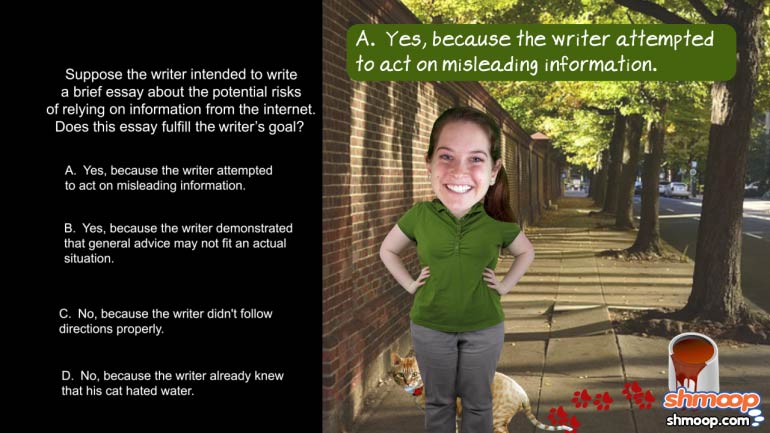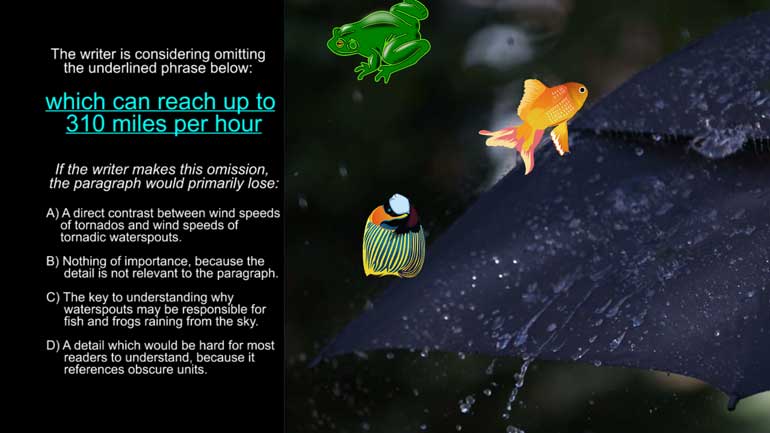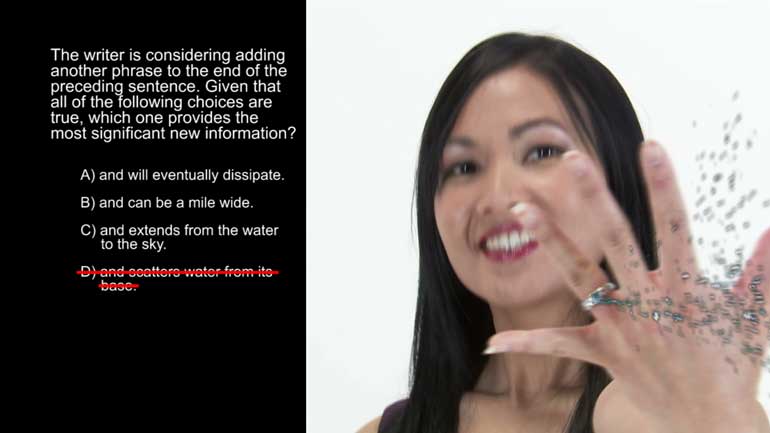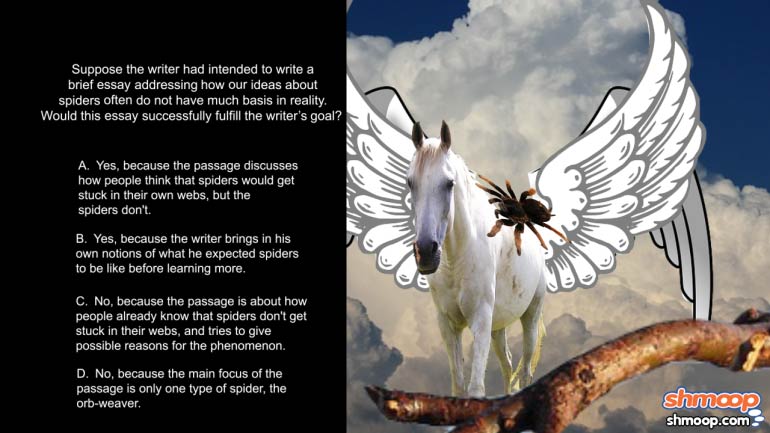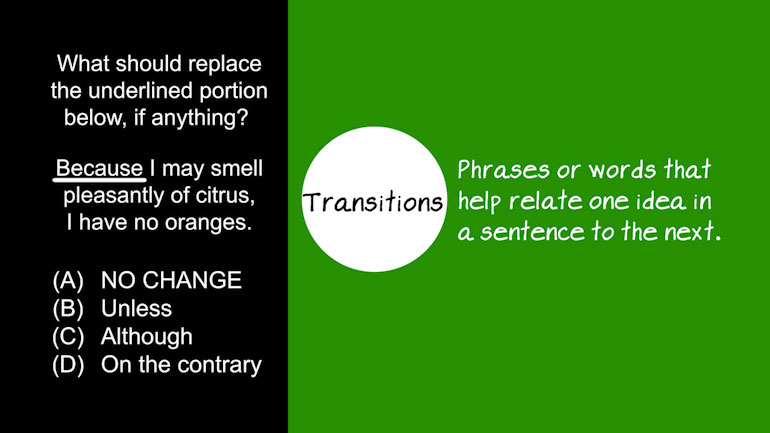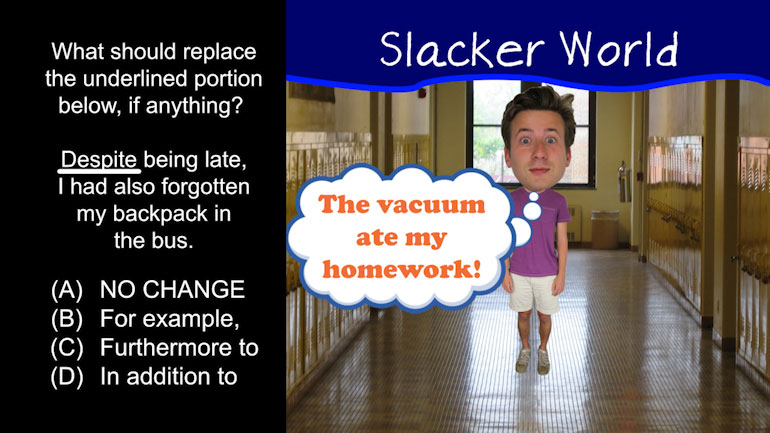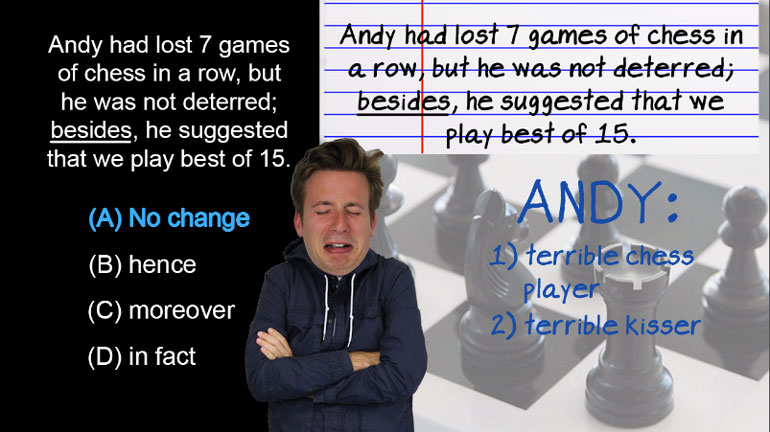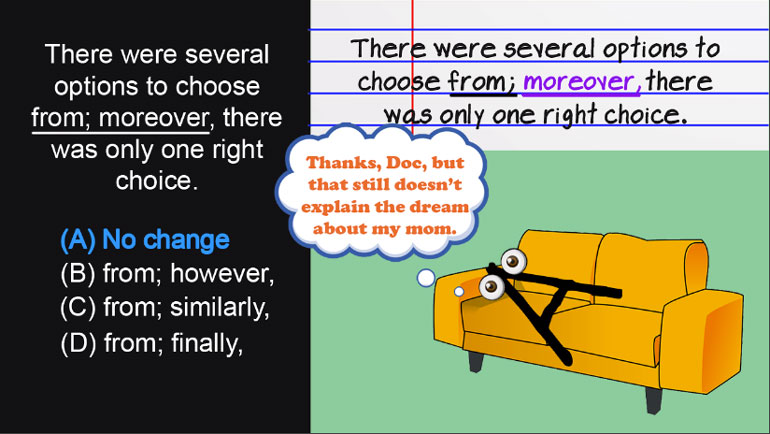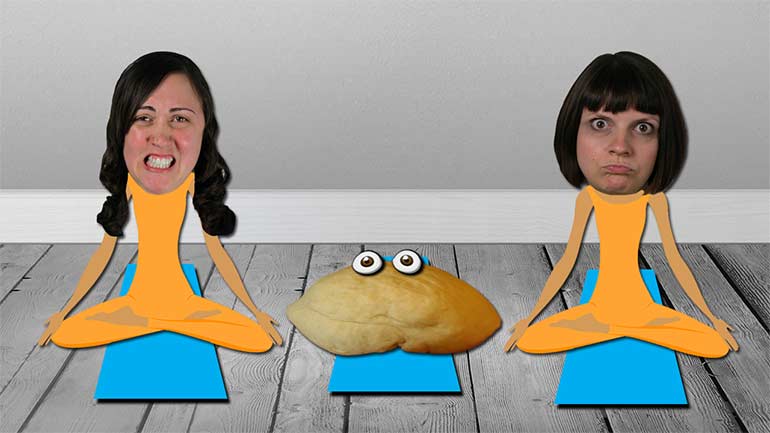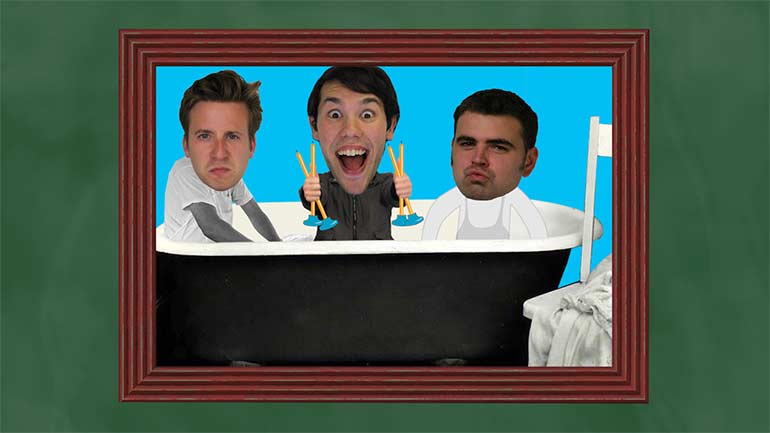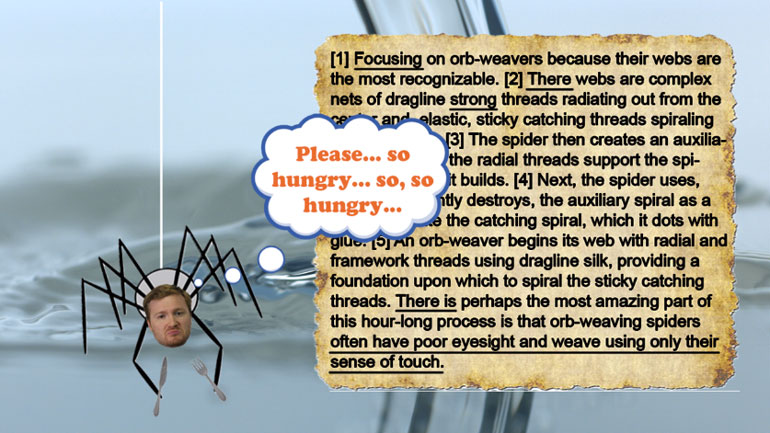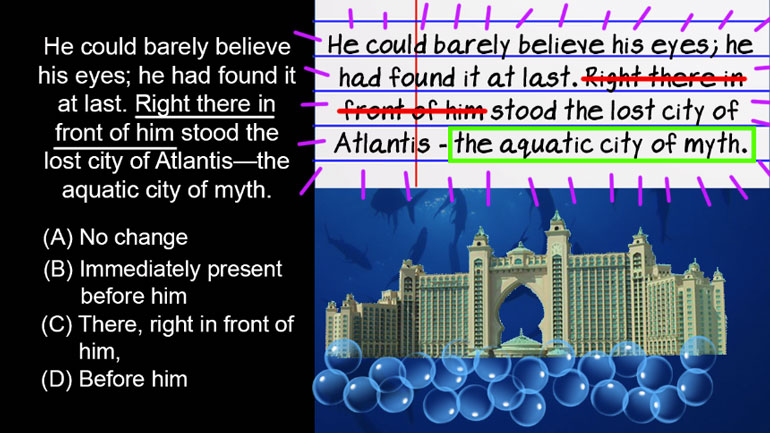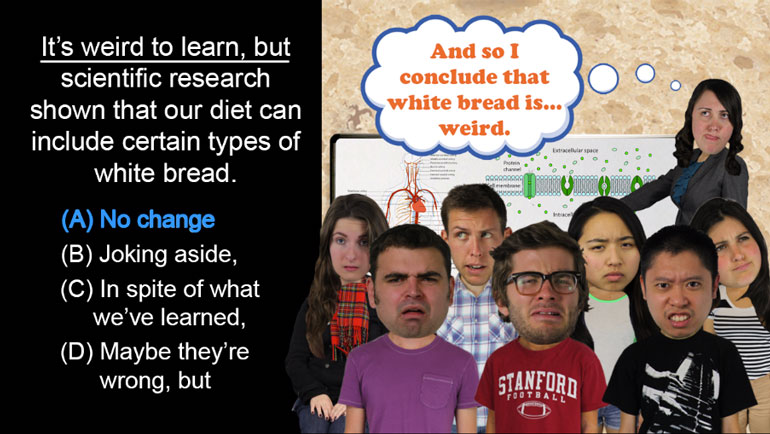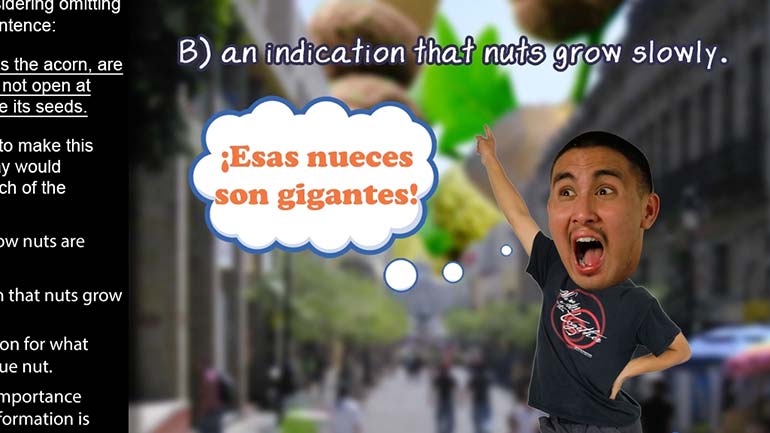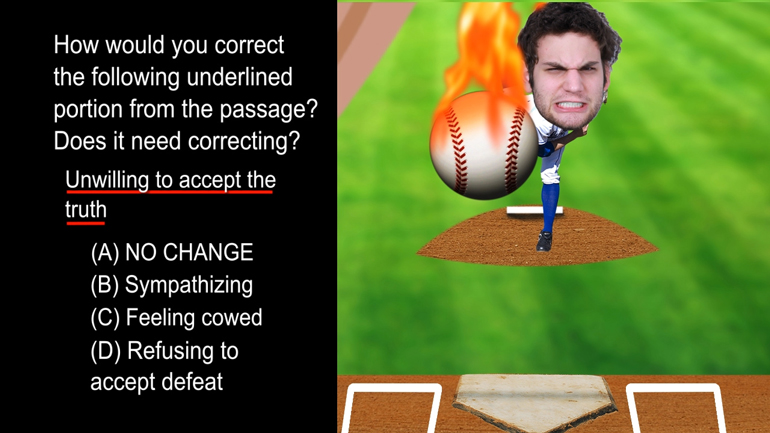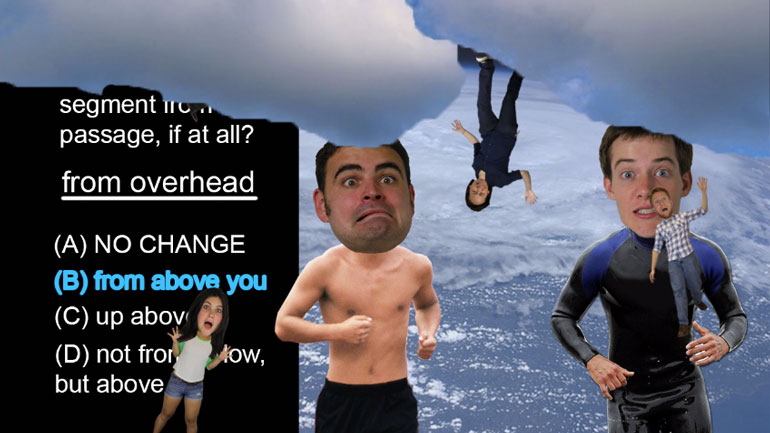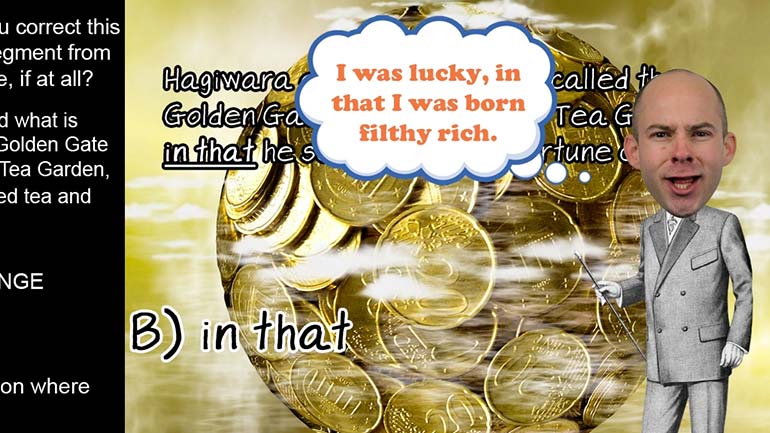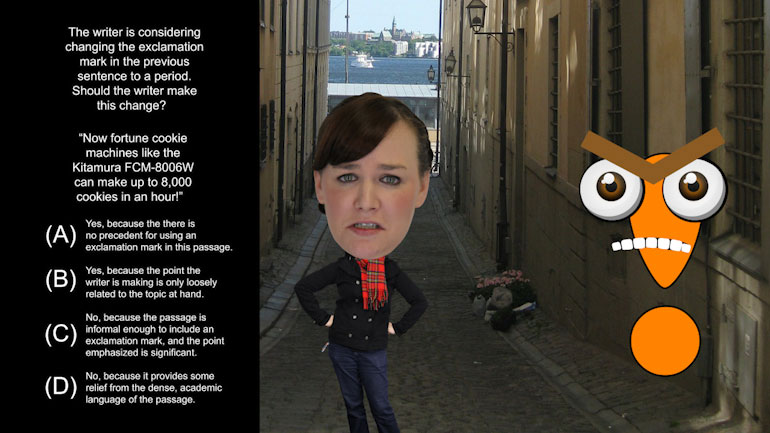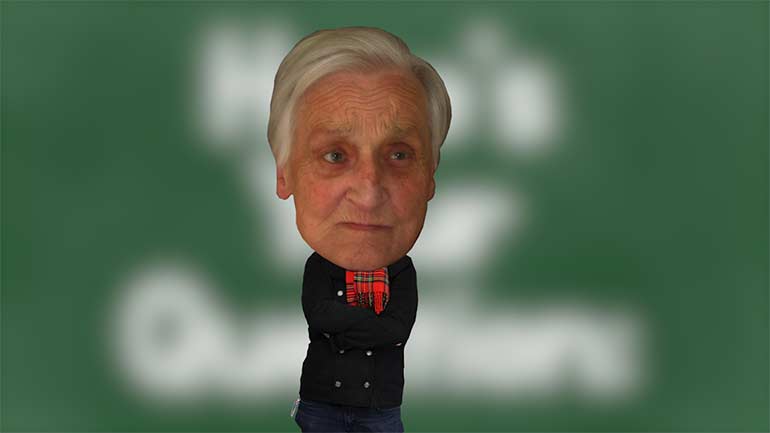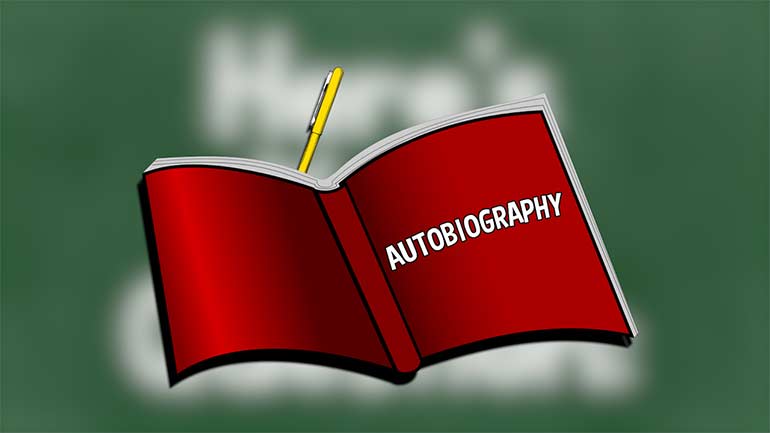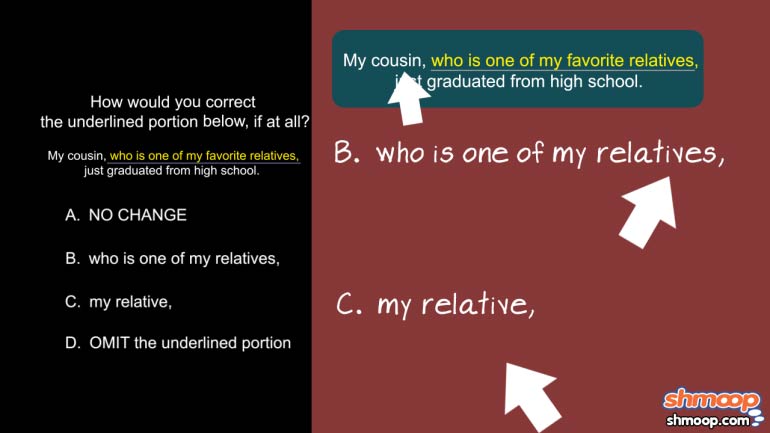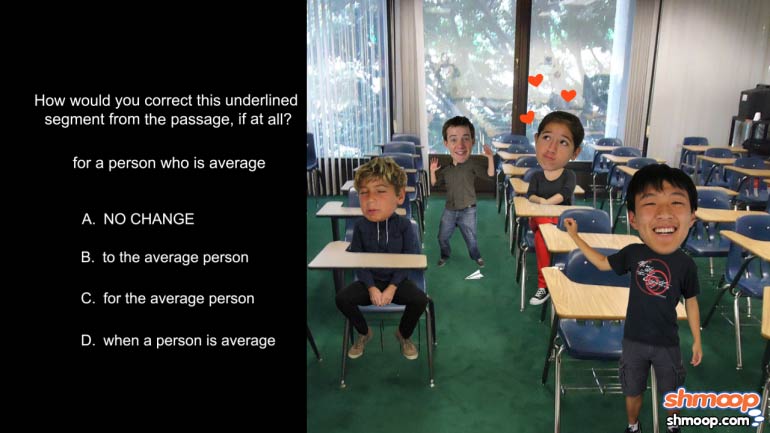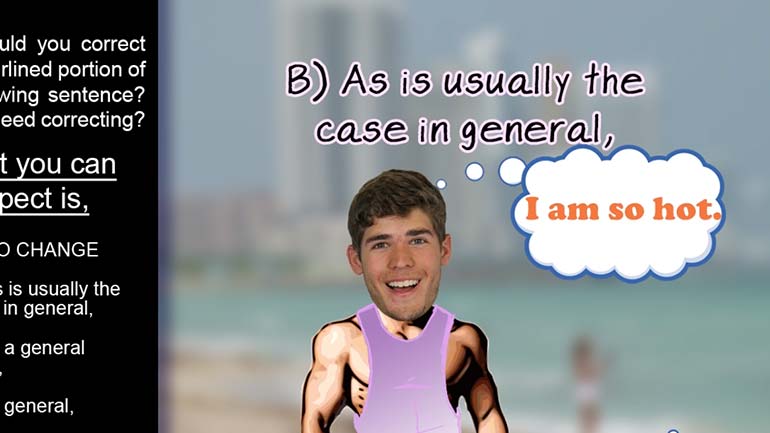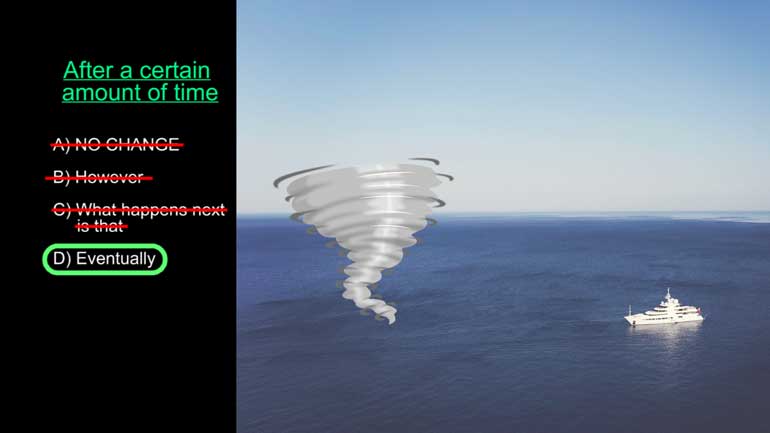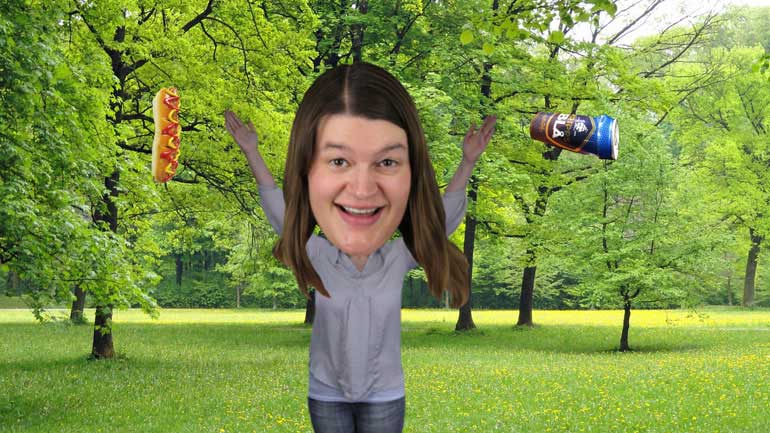ShmoopTube
Where Monty Python meets your 10th grade teacher.
Search Thousands of Shmoop Videos
Rhetorical Skills Videos 50 videos
ACT English: Passage Drill 2, Problem 11. Which of the following sentences would make the most effective transition?
In this ACT English passage drill determine if the writer of the passage may or may not have achieved their proposed goal.
ACT English: Passage Drill Drill 3, Problem 2. What would the paragraph lose if the writer omits the underlined phrase?
ACT English 1.13 Passage Drill 222 Views
Share It!
Description:
ACT English: Passage Drill 1, Problem 13. Proper flow of sentences in a paragraph.
Transcript
- 00:03
Here’s your Shmoop du jour, brought to you by baby plants. Awwwww.
- 00:10
Check out the following passage and answer the question below.
- 00:26
For the sake of logic and the coherence of this paragraph, Sentence 4 should be placed, where?
- 00:31
And here are the potential answers...
- 00:37
It’s important that the sentences in a paragraph flow logically together.
Full Transcript
- 00:41
As writers, we need to take our readers on a smooth ride from one point to the next.
- 00:45
If the ride gets too bumpy or jarring, readers might get confused and lost.
- 00:48
And well, go elsewhere.
- 00:50
And when readers get lost, they stop reading, and everything we’ve written becomes a waste of time.
- 00:57
As it is, the paragraph in question definitely takes readers on a bumpy ride.
- 01:01
Choice (A) suggests leaving it as it is, but we can’t in good conscience do that since we know readers
- 01:06
will be lost without a map.
- 01:08
This is because Sentence 4 inserts a topic kinda randomly. Sentence 3 tell us about the
- 01:13
shoots that emerge from the pores of a coconut, and sentence 5 continues the thought by informing
- 01:18
us that the “shoots eventually make a new fruit.” Sentence 4, however, is focused
- 01:23
on defining what a seed is in general.
- 01:27
Since Sentence 4 has nothing specifically to do with “shoots,” it interrupts the flow of logic.
- 01:32
It’s clear then that this sentence needs to relocate.
- 01:35
Choice (D) claims that we should make Sentence 4 the final sentence of the paragraph.
- 01:39
Just like choice (A), however, this puts a major bump in the road.
- 01:43
As we said earlier, Sentence 5 is about how shoots turn into fruit.
- 01:47
Placing a definition for seeds after it makes no more sense than placing such a definition before it.
- 01:53
Thus, we can nix choice (D) for the good of the paragraph
- 01:55
and all those readers who are desperate for a clear understanding of how coconuts reproduce.
- 02:06
Choice (B) also interrupts the train of logic.
- 02:10
It doesn’t work to place Sentence 4 between Sentences 2 and 3.
- 02:13
Sentence 2 fills us in on coconut pores, and Sentence 3 carries on the thought.
- 02:18
Breaking up the flow with Sentence 4 would only cause confusion.
- 02:21
The correct answer is (C).
- 02:23
The topic of Sentence 4 is the "seed" of the coconut, an idea that
- 02:27
is introduced in the first sentence of the paragraph, but not discussed in any of the
- 02:31
following sentences. This tells us that the best place for Sentence 4 is after Sentence 1.
- 02:36
Disturbing thought: if we eat coconut seeds, will baby coconuts grow in our bellies?
Related Videos
ACT English: Punctuation Drill 2, Problem 2. Where should the semi-colon be placed?
ACT English: Punctuation Drill 3, Problem 1. How should this sentence be changed so that it is grammatically correct?
ACT English: Punctuation Drill 3, Problem 2. How should we properly hyphenate the words in this sentence?
ACT English: Punctuation Drill 3, Problem 4. Which choice best formats this list of items?
ACT English: Punctuation Drill 2, Problem 1. Which choice of punctuation best completes the sentence?

